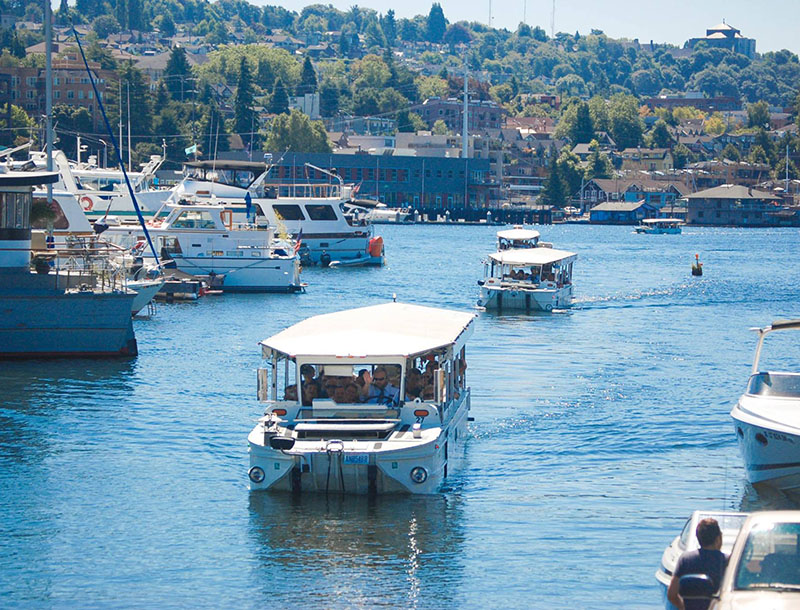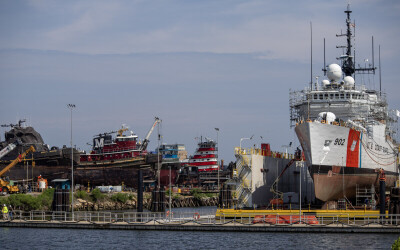The National Transportation Safety Board (NTSB) is pushing for new weight standards for amphibious passenger vehicles (APV) — commonly called duck boats — after earlier advocating similar changes for passenger vessels because of Americans’ growing girth.
The National Highway Traffic Safety Administration (NHTSA) should raise its weight assumptions from 150 lbs. per person to 185 lbs. “to accurately reflect today’s traveling public,” NTSB investigator Ron Kaminski said this week at a meeting on the Sept. 24, 2015, duck boat crash that killed five people on a Seattle bridge. The board attributed the accident to improper manufacturing and inadequate maintenance involving the duck’s left front axle housing.
APVs, whose manufacturers are supposed to register with NHTSA, should have the same weight rating whether they’re being used on the road or in the water, he said. APVs carry tourists on both land and sea.
The NTSB — which has no enforcement power, though it does have the power of persuasion — approved the staff recommendation.
The increased weight would square with a 2011 Coast Guard rule that required owners of passenger vessels to recalculate their weight and stability.
The recalculations were necessary thanks to the extra pounds Americans have put on over the last several decades. The average passenger weight now must be figured at 185 lbs. rather than the 160 lbs. the Coast Guard used earlier, or 140 lbs. for vessels operating in protected waters that carry a mix of men, women and children. As a result, some vessels may be carrying fewer passengers than originally planned.
The passenger vessel industry had been considering the changes when the NTSB investigated two fatal tour boat accidents and found that out-of-date weight standards were partially responsible for the boats capsizing. Shortly after the first NTSB report in 2006, the Coast Guard issued voluntary weight guidelines while the formal rulemaking was under way.





